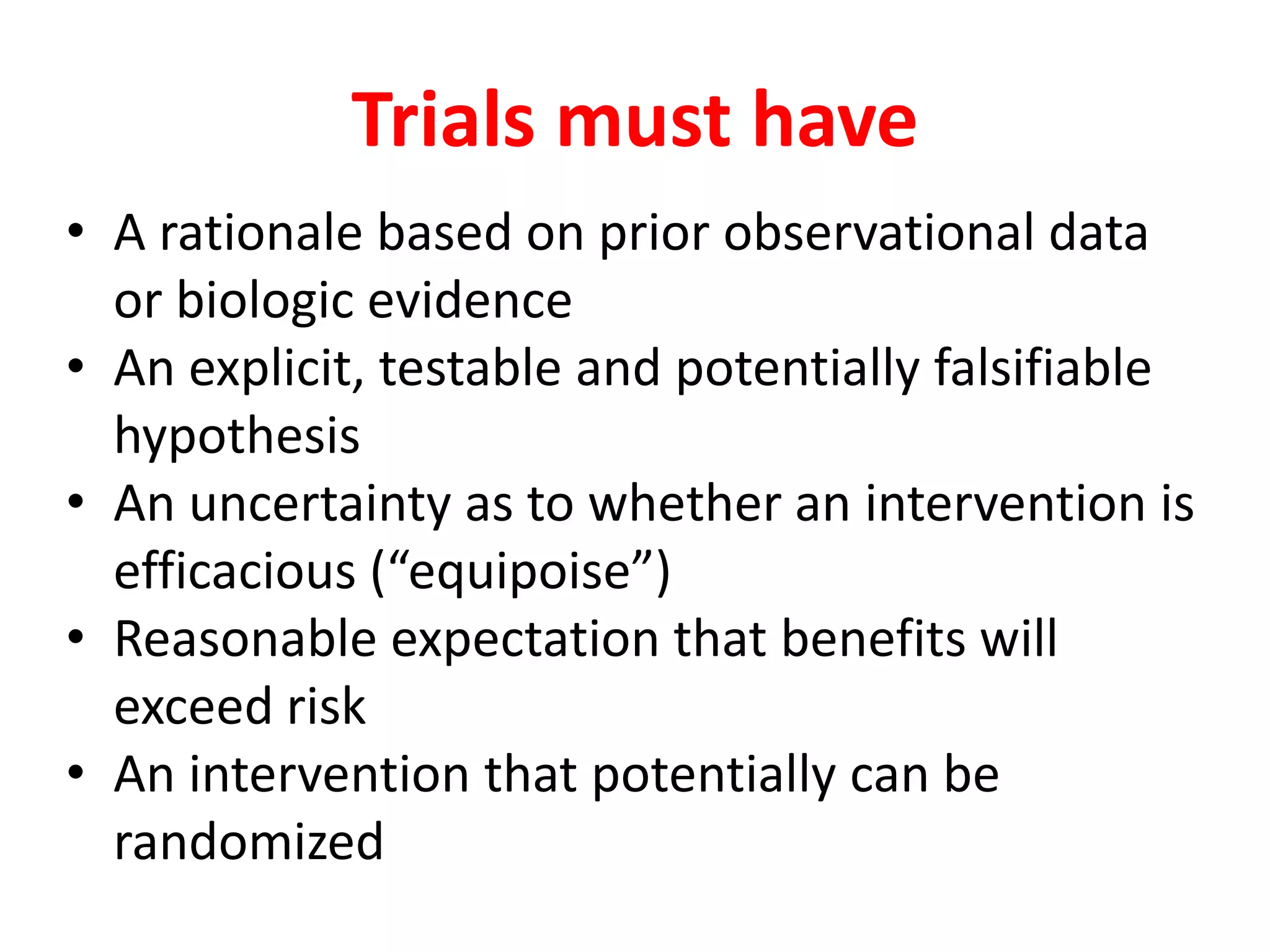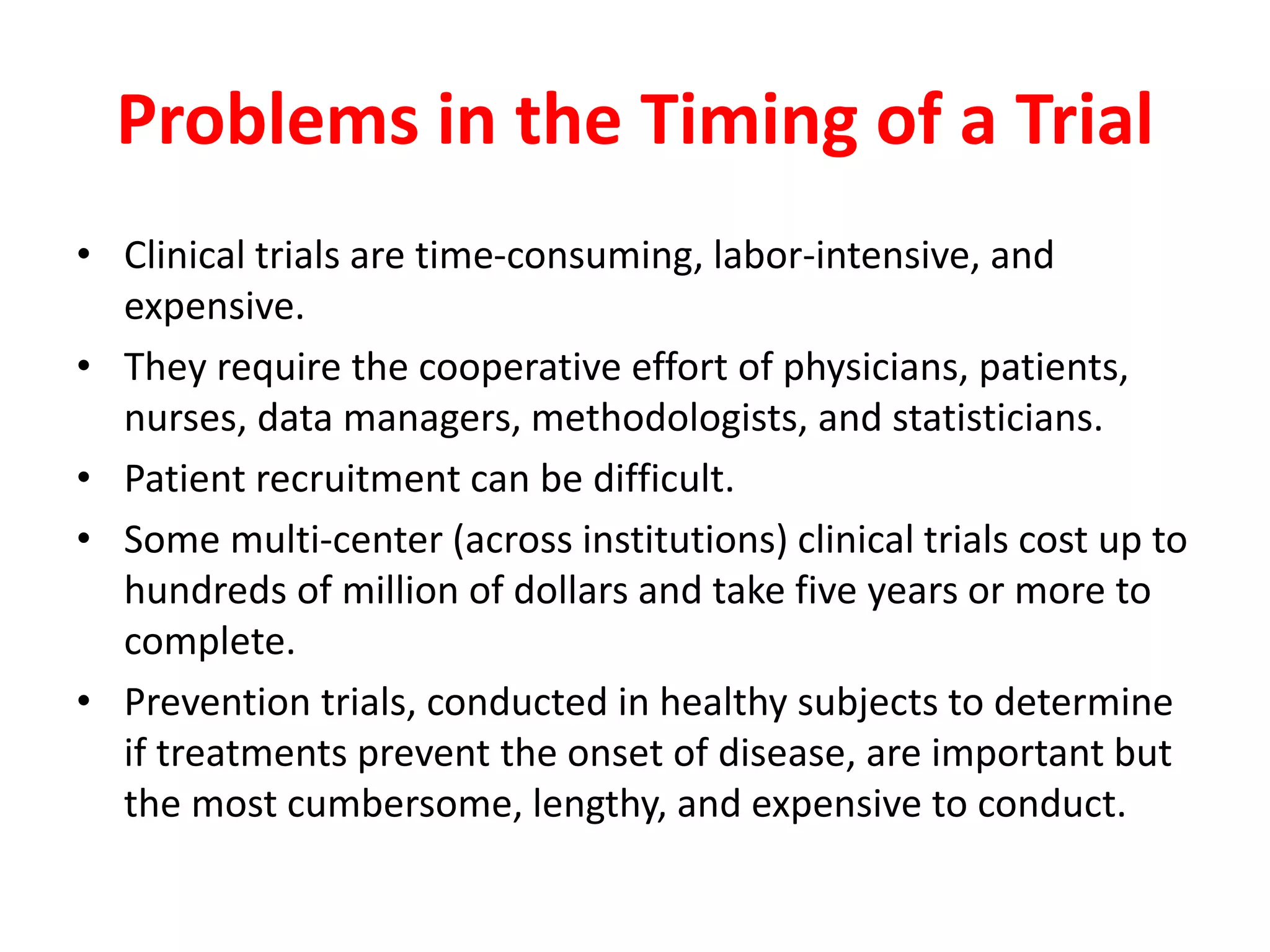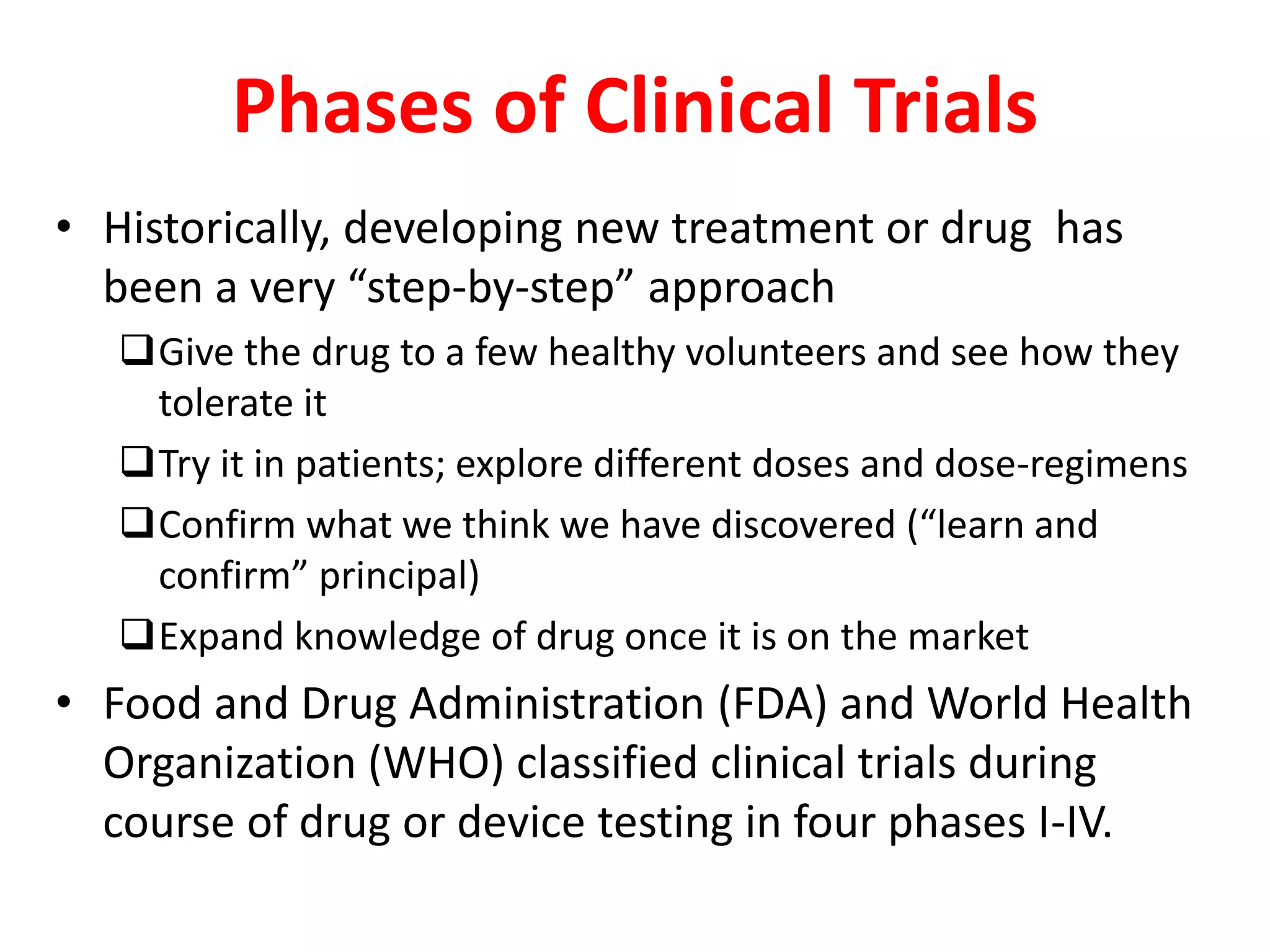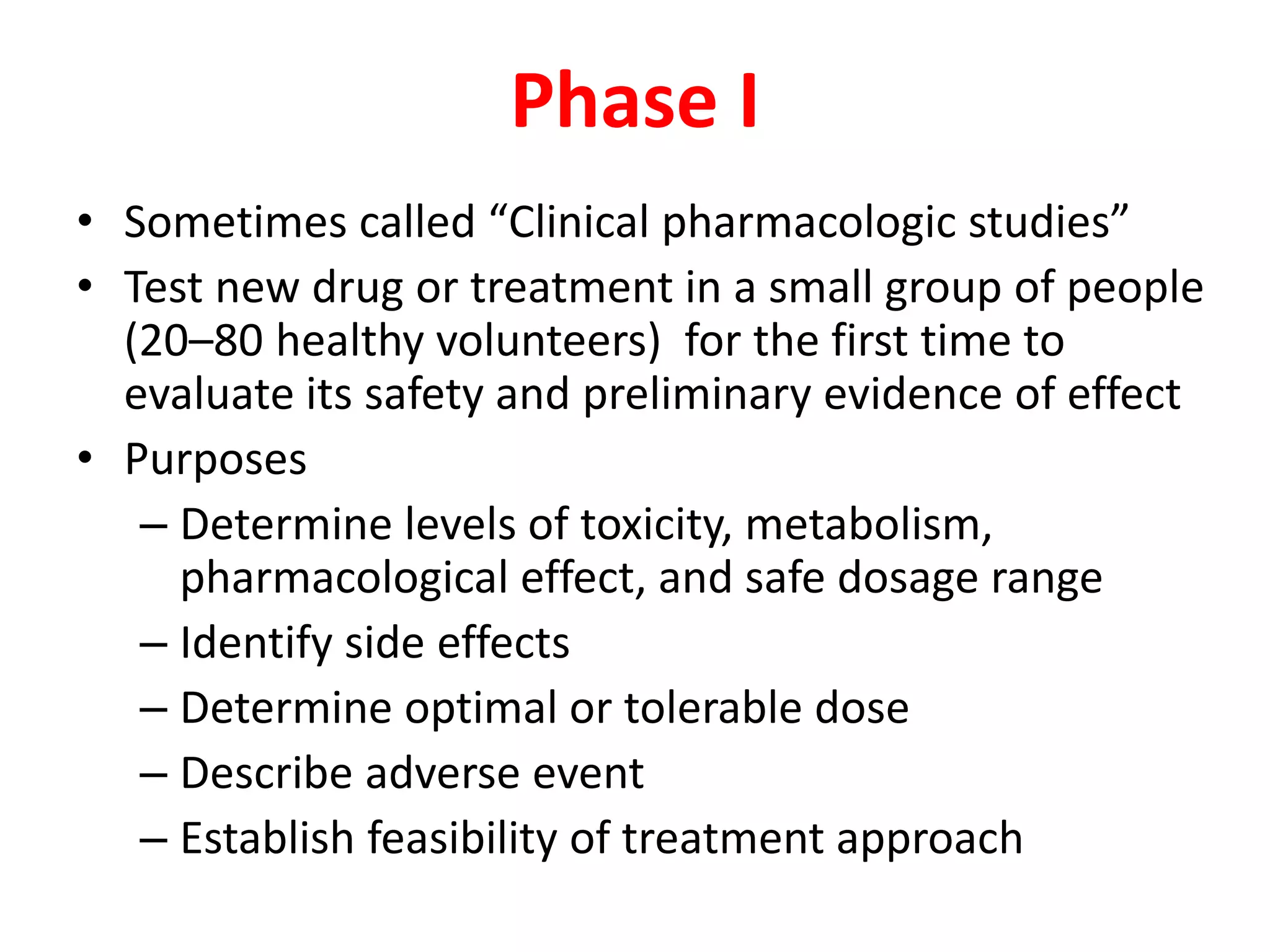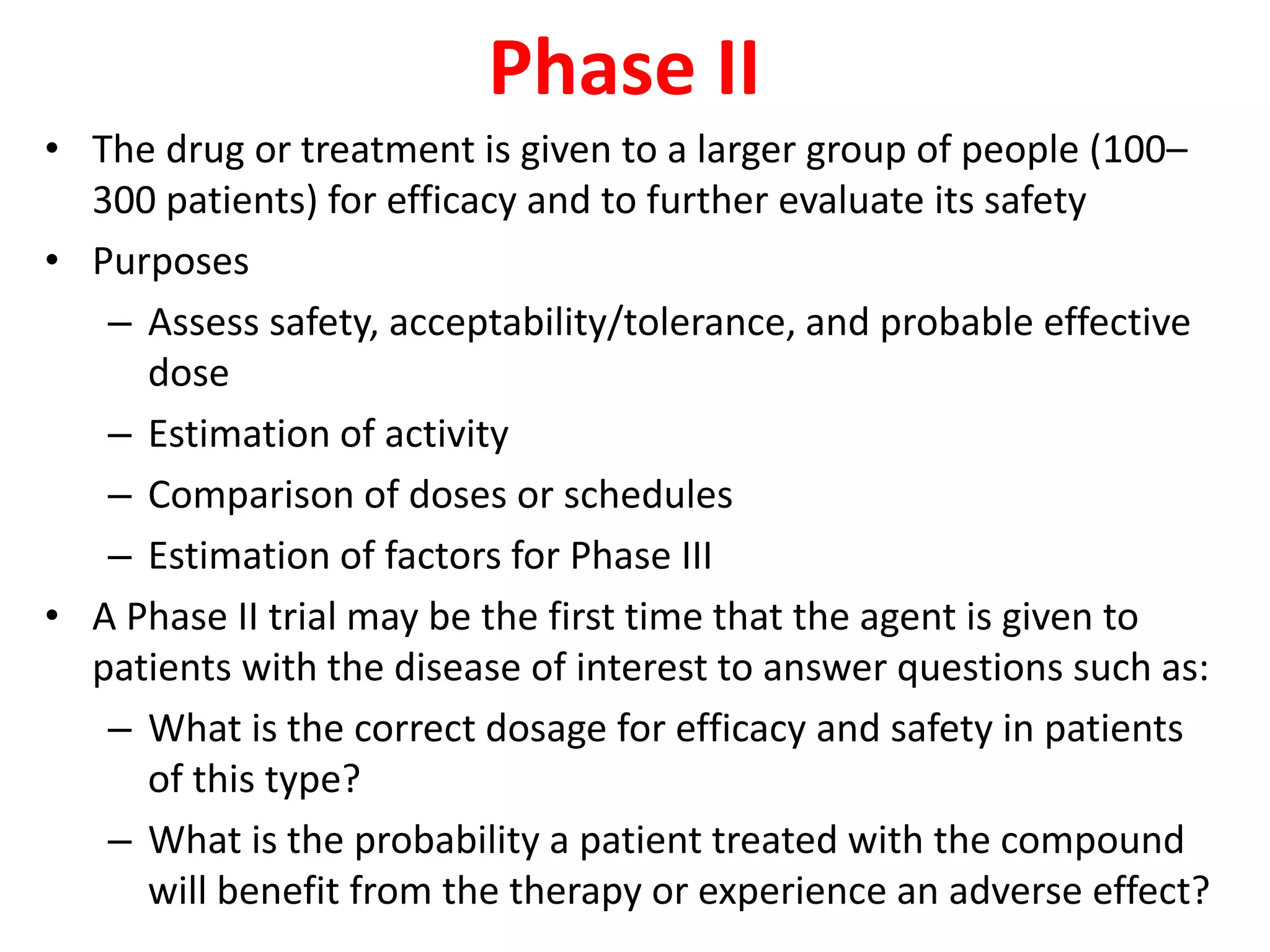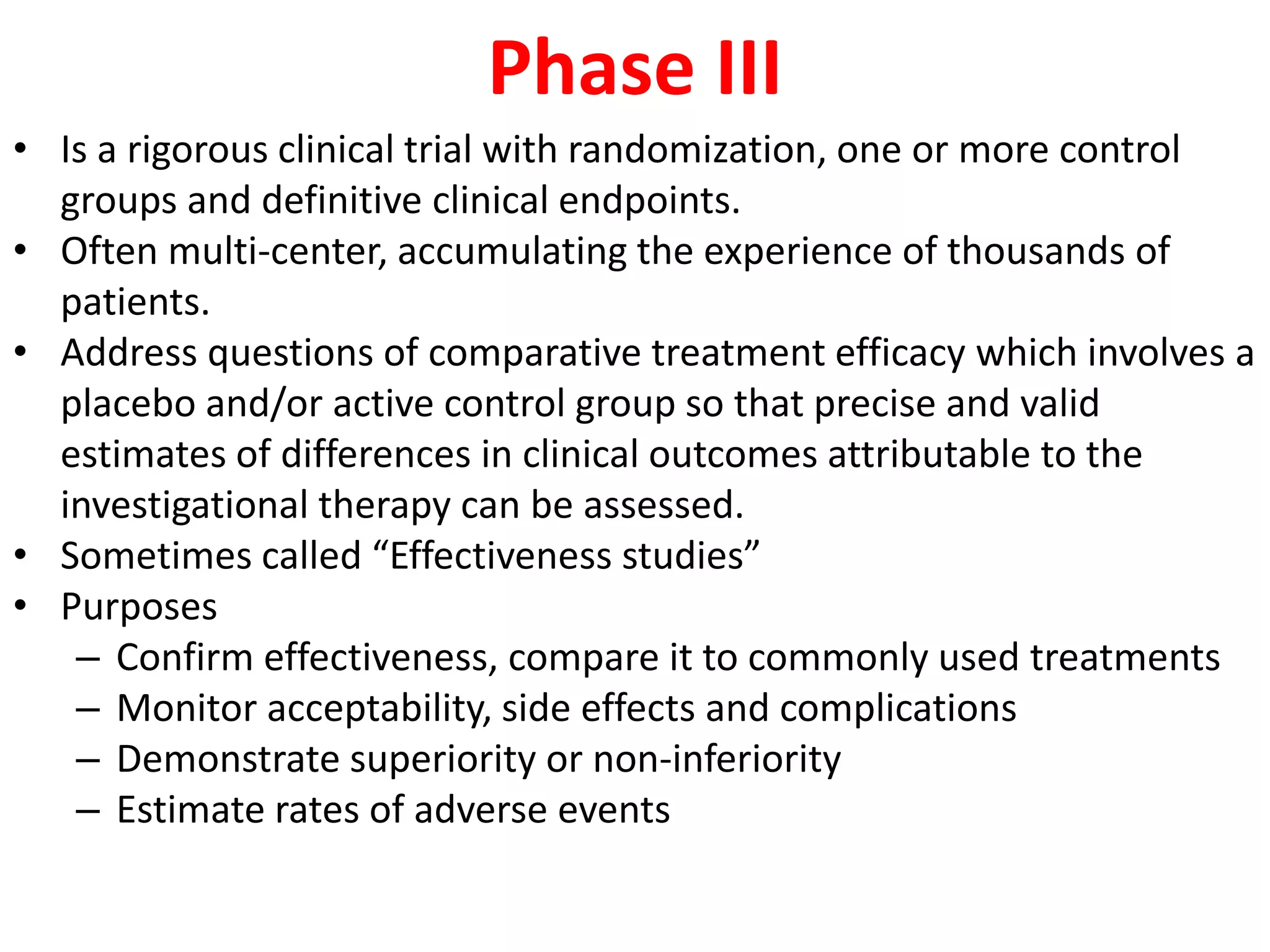A clinical trial is a controlled experiment conducted in humans to test new interventions such as drugs or devices. James Lind conducted the first systematic clinical trial in 1747 to test treatments for scurvy. Since then, clinical trials have evolved to their modern form involving control groups, randomization, and different phases. Clinical trials are conducted in four phases - Phase I tests safety in small groups, Phase II explores efficacy and optimal dosing, Phase III tests efficacy in large groups, and Phase IV occurs after approval to further monitor safety. Clinical trials are needed to develop and regulate new medical interventions and provide high-quality evidence on benefits and risks.



![First Systematic Clinical Trial
• The first proper clinical trial was conducted by the physician James
Lind]
• The disease scurvy, now known to be caused by a Vitamin C
deficiency, would often have terrible effects on the welfare of the
crew of long distance voyages](https://image.slidesharecdn.com/rctch1-230515121145-45ac1b8a/75/RCT-CH1-ppt-4-2048.jpg)





